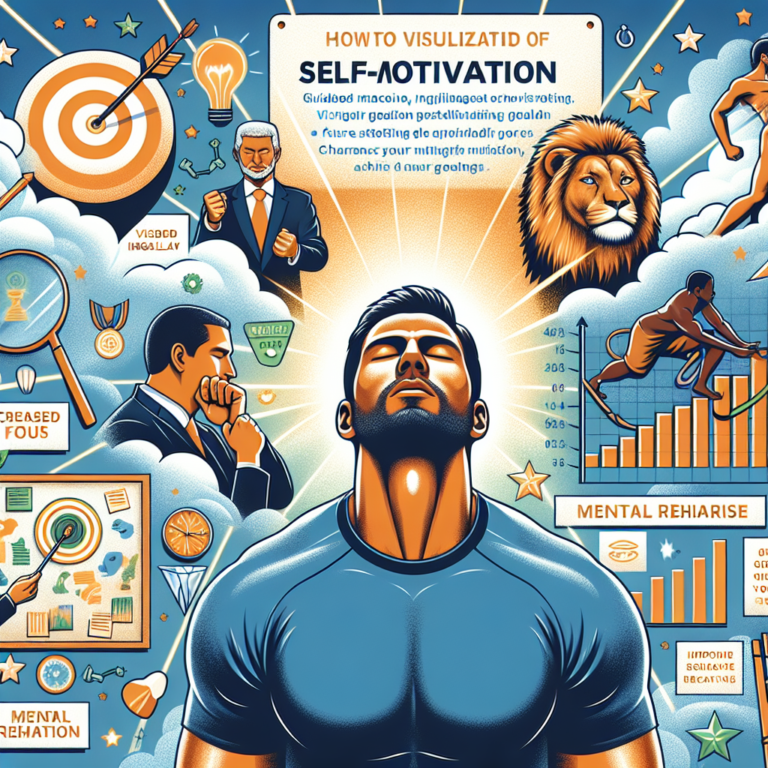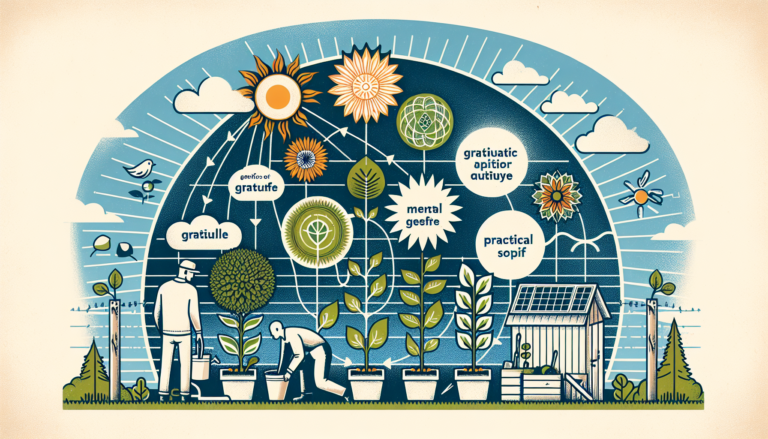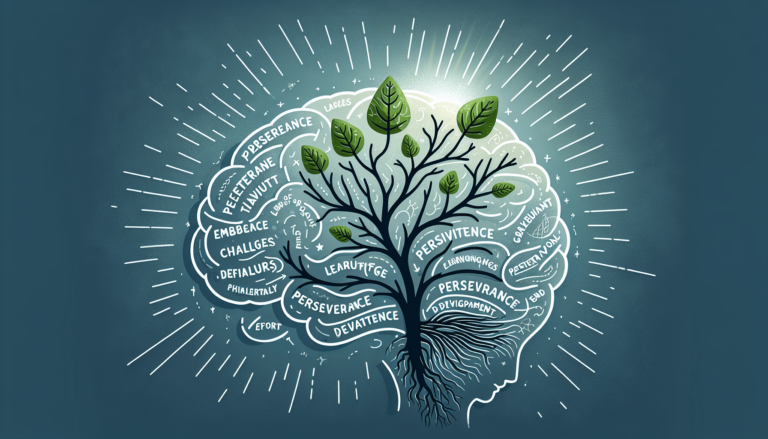The Power Of Visualization In Achieving Your Dreams
Imagine a life where your dreams become a reality, where you are not just wishing for success but actively working towards it. This is the power of visualization – the ability to imagine and envision your goals with such clarity and detail that it becomes a driving force in your life. Visualization allows you to create a mental roadmap to achievement, mobilizing your inner resources and paving the way for success. By harnessing the power of your imagination, you can bring your dreams closer to reality and unlock your true potential. Get ready to embark on a journey of self-discovery and transformation as we explore the remarkable power of visualization in achieving your dreams.

Understanding Visualization
Definition of visualization
Visualization is the process of creating mental images or pictures in your mind’s eye. It involves using your imagination to vividly imagine and experience something that you desire or aspire to achieve. Whether it’s visualizing yourself achieving a specific goal, overcoming a challenge, or simply envisioning the life you desire, visualization is a powerful tool that taps into the incredible power of your mind.
The role of imagination and mental imagery
Imagination plays a crucial role in visualization. It allows you to tap into the creative powers of your mind, enabling you to construct vivid mental images of what you want to manifest in your life. By harnessing the power of mental imagery, you can create a detailed and realistic picture of your dreams and aspirations. This helps to engage your senses and emotions, making your visualization experience more compelling and impactful.
How visualization is different from daydreaming
Although visualization and daydreaming may seem similar, there is a fundamental difference between the two. Daydreaming typically involves random and uncontrolled thoughts that drift aimlessly through your mind, often without any specific purpose or intention. On the other hand, visualization is a focused and intentional practice that allows you to direct your thoughts toward a particular outcome or goal. Visualization requires concentration, clarity, and a purposeful engagement of your imagination to create specific mental images.
The Science Behind Visualization
The power of the mind
The power of your mind is immense, and visualization taps into that power. When you visualize, your mind can’t distinguish between a real experience and a vividly imagined one. It activates the same neural pathways and releases similar neurochemical signals as if you were actually experiencing the event. This means that visualization has the potential to influence your thoughts, emotions, and actions in a profound way.
Neurological basis of visualization
Neuroscience has shown that visualizing specific actions or outcomes activates the same neural networks as physical execution. For example, when you visualize yourself practicing a skill or performing well in a particular activity, the corresponding brain regions associated with that skill or activity are stimulated. This enhances neural connectivity and strengthens the neural pathways involved, improving your ability to perform in real-life scenarios.
The link between thoughts and actions
Your thoughts shape your actions, and visualization harnesses that connection. By consistently and vividly visualizing yourself taking positive and effective actions toward your goals, you are conditioning your mind to align your thoughts with those actions. This alignment of thoughts and actions creates a powerful synergy that propels you forward and increases your chances of success.
Law of attraction and visualization
Visualization is closely linked to the Law of Attraction, which suggests that like attracts like. According to this law, by visualizing your desires and believing that they are already within your grasp, you can attract those desires into your life. When you visualize with clarity, focus, and belief, you are sending out powerful intentions to the universe, which can magnetically draw the people, resources, and opportunities you need to manifest your dreams.
Benefits of Visualization
Increased motivation and focus
Visualization serves as a powerful motivational tool by keeping your goals at the forefront of your mind. When you regularly visualize your desired outcomes, you reinforce your motivation and commitment. The clear mental images and positive emotions associated with visualization help to focus your attention on the steps you need to take to achieve your dreams, boosting your motivation and perseverance.
Enhanced self-confidence and self-belief
Visualization has a transformative effect on your self-confidence and self-belief. When you consistently visualize yourself successfully accomplishing your goals, your mind becomes accustomed to seeing yourself as capable and deserving of success. This cultivates a strong sense of self-confidence and belief in your abilities, helping you overcome self-doubt and setbacks along the way.
Improved performance and goal attainment
Numerous studies have shown that visualization positively impacts performance and goal attainment. Athletes, for example, use visualization techniques to improve their athletic performance by mentally rehearsing their movements and envisioning successful outcomes. By visualizing yourself performing at your best and achieving your goals, you are priming your mind and body for success, increasing your chances of reaching your desired outcomes.
Stress reduction and mental well-being
Visualization has a profound impact on reducing stress and improving overall mental well-being. When you engage in visualization, you create a mental space that is free from stress and negativity. The positive emotions and feelings associated with your visualizations help to counteract the effects of stress, promoting a sense of relaxation, calmness, and increased mental resilience. Visualization also helps you develop a more optimistic and positive mindset, enabling you to navigate life’s challenges with greater ease.
Harnessing the Power of Visualization
Setting clear and specific goals
To harness the power of visualization, it’s important to start with clear and specific goals. When your goals are well-defined, you can create more detailed and focused mental images of what you want to achieve. Clearly articulating your goals ensures that your visualization practice is aligned with your desires and helps to direct your thoughts and actions toward their attainment.
Creating vivid mental images
When visualizing, it’s essential to create vivid mental images that are as detailed and realistic as possible. The more sensory details you can include in your visualizations, such as colors, sounds, textures, and emotions, the more impactful they will be. By engaging all your senses during visualization, you make the experience more vivid and immersive, making it easier for your mind to accept and embrace the desired outcome.
Engaging multiple senses during visualization
While visualization predominantly relies on visual imagery, engaging multiple senses can enhance the effectiveness of your practice. For example, if you are visualizing yourself giving a successful presentation, not only imagine the visuals, but also try to incorporate other senses. Imagine the feeling of confidence and satisfaction, hear the applause and positive feedback, and even evoke the smell of the room. Engaging all your senses creates a more holistic and immersive visualization experience.
Practicing visualization techniques regularly
Consistency is key when it comes to visualization. To maximize its effectiveness, make it a daily habit. Just as you would exercise regularly to build physical strength, practicing visualization regularly strengthens your mental and emotional muscles. Set aside dedicated time each day to engage in your visualization practice, whether it’s in the morning, before bed, or during a quiet moment in your day. The more you practice, the more natural and effortless visualization will become.
Utilizing guided visualization exercises
Guided visualization exercises can be incredibly helpful, especially if you’re new to visualization or find it challenging to create mental images on your own. Guided visualizations typically involve listening to an audio recording that guides you through a specific visualization experience. These recordings usually provide detailed instructions and prompts to help you create vivid mental images and engage your senses. There are numerous guided visualizations available online and in books, covering a wide range of topics and goals.

Visualization Techniques
Creative visualization
Creative visualization involves using your imagination to create mental images of your desired outcomes. It allows you to actively participate in shaping your future by visualizing the specific details and aspects of your goals, such as what they look like, how they feel, and how you will achieve them. Creative visualization engages your creative faculties and helps you make your dreams feel real and achievable.
Vision boards
Vision boards are a visual representation of your goals and desires. They are created by gathering images, quotes, and affirmations that resonate with your aspirations and arranging them on a physical or digital board. Your vision board acts as a constant visual reminder of what you want to manifest in your life, and by regularly observing it, you reinforce your visualizations and keep your goals at the forefront of your mind.
Mental rehearsals
Mental rehearsals involve mentally practicing and visualizing yourself performing specific actions, whether it’s delivering a speech, winning a competition, or acing a job interview. By mentally rehearsing these scenarios, you improve your confidence, reduce performance anxiety, and enhance your overall performance when it comes time to execute the actions in real life.
Future self visualization
Future self visualization involves imagining and visualizing your ideal future self, the person you aspire to become. By visualizing the characteristics, habits, and accomplishments of your future self, you create a clear and compelling image of who you want to be. This form of visualization helps to align your current actions and choices with your desired personal growth and development.
Positive affirmation visualization
Positive affirmations are empowering statements that reflect the outcomes you desire. By combining positive affirmations with visualization, you amplify their impact. During visualization, you can repeat affirmations aligned with your goals, reinforcing the positive beliefs and expectations associated with them. By visualizing yourself confidently and passionately reciting these affirmations, you strengthen the neural pathways that support your desired outcomes.
Combining Visualization with Action
Creating an action plan
While visualization is a powerful tool for goal achievement, it’s important to combine it with concrete action steps. Creating an action plan ensures that you have a roadmap to follow and provides clarity on the practical steps you need to take to manifest your dreams. Identify the specific actions required and break them down into manageable and achievable tasks. Use your visualizations to continually inspire and motivate you to take consistent action.
Taking consistent and deliberate actions
Visualization alone is not enough to achieve your dreams. Taking consistent and deliberate actions is essential for turning your visualizations into reality. Use the motivation and inspiration from your visualizations to fuel your daily actions. Each day, take purposeful steps towards your goals, even if they are small. The combination of visualization and action creates a powerful synergy that propels you towards success.
Using visualization as a motivational tool
Visualization is a potent motivational tool that can be used throughout your journey. Whenever you feel demotivated or face challenges, close your eyes and visualize yourself overcoming those obstacles with confidence and perseverance. By repeatedly visualizing yourself successfully overcoming challenges, you rewire your brain to approach difficult situations with a positive mindset, resilience, and determination.
Visualizing overcoming obstacles and challenges
Visualization can be particularly helpful in preparing yourself mentally and emotionally for overcoming obstacles and challenges. By visualizing yourself navigating through difficult situations, finding solutions, and ultimately triumphing, you build resilience and mental fortitude. Your visualizations can help you maintain a positive attitude and persistence, enabling you to adapt and overcome any hurdles that come your way.
Success Stories and Studies
Examples of successful individuals who used visualization
Throughout history, many successful individuals have credited visualization as a key factor in their achievements. For example, Jim Carrey famously wrote himself a check for $10 million early in his acting career and visualized himself receiving that amount. Today, he is a highly successful actor and comedian. Olympic athletes such as Michael Phelps and Usain Bolt have also attributed their success to visualization techniques, regularly visualizing themselves achieving record-breaking performances.
Scientific studies on the effectiveness of visualization
Numerous scientific studies have substantiated the effectiveness of visualization techniques. For instance, a study published in the Journal of Sports Sciences found that athletes who utilized visualization techniques saw significant improvements in their performance compared to those who did not. Another study published in the Journal of Consulting and Clinical Psychology demonstrated that individuals who practiced positive visualization experienced reduced anxiety and increased feelings of well-being.
Visualization in sports and performance psychology
Visualization is widely used in sports and performance psychology to enhance performance and achieve peak mental states. Athletes often utilize visualization techniques to mentally rehearse their skills, improve focus, and boost confidence. By visualizing themselves executing their sport-specific movements flawlessly and achieving their desired outcomes, athletes tap into the power of their mind to optimize their physical performance.
Visualization in personal development and goal achievement
In addition to sports, visualization plays a significant role in personal development and goal achievement. Many renowned personal development experts, such as Tony Robbins and Bob Proctor, emphasize the importance of visualization in manifesting success and creating the life you desire. By envisioning your goals and consistently visualizing their achievement, you activate the necessary mindset and drive to take the actions necessary to turn those goals into reality.
Common Challenges and Solutions
Difficulty in creating clear mental images
Some individuals may find it challenging to create clear mental images during visualization. If you struggle with this, don’t be discouraged. Start by focusing on one sense at a time and gradually build up to engaging multiple senses. Practice regularly and be patient with yourself. Over time, your visualization skills will improve, and the mental images will become clearer and more detailed.
Dealing with self-doubt and skepticism
Self-doubt and skepticism can undermine the effectiveness of visualization. Combat these negative thoughts by consciously choosing to believe in the power of visualization and its ability to transform your life. Remind yourself of the success stories and scientific evidence supporting visualization. Surround yourself with positive influences, such as books, podcasts, or supportive individuals, that reinforce the belief in the effectiveness of visualization.
Maintaining consistency in visualization practice
Consistency is paramount when it comes to visualization. Establish a routine and set aside dedicated time each day to practice visualization. Make it a non-negotiable part of your daily ritual, just like brushing your teeth. Treat it as a commitment to yourself and your dreams. Remember, even a few minutes of visualization each day can have a profound impact over time.
Addressing resistance to change
Visualization can sometimes uncover resistance to change. As you visualize your desired outcomes, you may encounter inner resistance or limiting beliefs that stand in your way. When this happens, acknowledge and address these thoughts and beliefs with compassion and curiosity. Challenge them, and replace them with empowering and supportive thoughts. Visualization can help you reprogram your subconscious mind and create new beliefs that align with your goals.
Visualization in Different Areas of Life
Career and professional success
Visualization can be a powerful tool for achieving career and professional success. By visualizing yourself excelling in your chosen profession, obtaining promotions, and achieving your career goals, you create a mental framework that aligns your thoughts and actions with success. Visualization can also help you develop specific skills, visualize successful job interviews, and imagine yourself thriving in challenging work situations.
Relationships and personal life
Visualization is not limited to professional goals; it can significantly impact your relationships and personal life as well. By visualizing yourself in loving, harmonious, and fulfilling relationships, you consciously attract positive and fulfilling connections into your life. Whether you desire a romantic partner, improve family relationships or enhance friendships, visualization can help manifest stronger and more meaningful bonds.
Health and well-being
Visualization can have a significant impact on your health and well-being. By visualizing yourself in optimal health, with vitality and energy, you program your mind and body to make choices that support your well-being. You can visualize yourself engaging in healthy habits, such as regular exercise, nutritious eating, and getting sufficient rest. Visualization can also be beneficial in managing stress and enhancing mental resilience.
Creativity and artistic pursuits
Visualization is a valuable tool for enhancing creativity and artistic pursuits. By visualizing your creative process, you can generate ideas, envision artistic projects, and tap into your creative flow. Visualize yourself confidently expressing your creativity, receiving inspiration, and bringing your artistic visions to life. Many artists, writers, and musicians utilize visualization techniques to overcome creative blocks and enhance their creative output.
Academic and educational achievements
Visualization can greatly support academic and educational achievements. By visualizing yourself studying effectively, retaining information, and performing well in exams or presentations, you enhance your learning capabilities. Visualization can also help you establish clear goals, stay motivated throughout your studies, and unlock your true academic potential. Visualize yourself confidently navigating challenges and achieving academic success.
Conclusion
In conclusion, visualization is a powerful tool that taps into the incredible potential of your mind. By harnessing the power of mental imagery and engaging your imagination, you can align your thoughts and actions with your desired outcomes. Visualization enhances motivation, self-confidence, and performance while reducing stress and fostering mental well-being. By combining visualization with deliberate action, you can manifest your dreams and achieve success in various areas of your life. So, start incorporating visualization into your daily routine, and watch as your dreams become your reality. Remember, the power to create the life you desire lies within you, waiting to be unlocked through the transformative practice of visualization.







